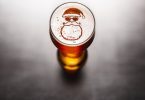30% would consider lower alcohol beer on hot Summer’s day – UK survey
The survey also found that 55 per cent of respondents don’t know the number of calories in typical drinks with 74 per cent of women overestimating the calorie content of beer as do 60 per cent of men. One in five (19 per cent) correctly estimated the calorie content of beer – fewer than for wine – and one quarter (25 per cent) got it right. As well as having lower calories, beer contains absolutely no fat or cholesterol and is low in carbohydrates. If some women avoid beer due to a misconception that it’s a ‘high calorie’ option, then it’s certainly time for a re-think.
The survey found that around half (53-55 per cent) of respondents did not know the number of calories in a range of popular drinks. In fact beer is less calorific than wine:?
• A half pint (284ml) of 2.8 per cent ABV bitter contains 80 calories?
• A half pint (284ml) of 4 per cent ABV lager contains 96 calories?
• A 175ml glass of 12.5 per cent red wine contains 119 calories)?
• A 175ml glass of 12.5 per cent white wine contains 131 calories
The good news for the beer category comes with the finding that women appear to be more receptive than men to the idea of drinking beer at 2.8 per cent ABV – a new, lower strength beer option which has been steadily growing in popularity – in order to cut down on their unit consumption and reduce calorie intake.
Following campaigns to educate adults on alcohol units and drinking responsibly, 31 per cent of beer drinkers say that they’d now consider drinking lower alcohol beer when cutting down on alcohol units.
While beer already has the lowest alcohol content of any alcoholic drink category, lower strength beers are becoming easier to find in pubs and on supermarket shelves. They include many new beers at 2.8 per cent ABV and a diverse range of non-alcoholic beers.
Brigid Simmonds, Chief Executive of the British Beer & Pub Association commented, “If you’re trying to cut down on calories and keep track of units during the UK’s Summer of Celebration, beer in moderation, particularly lower strength beer, is a great option.”
For more information visit: www.beergenie.co.uk.
Women driving low-alcohol trends worldwide
Demand for low-alcohol and low-calorie beverages is increasing around the world with women said to be driving the trend as reflected in the findings of the new IWSR Insight Report 2012.
These trends are emerging from Asia to Latin America across both the wine and spirits categories. In Europe, this is mainly due to increased taxes; producers are reducing the alcohol content to keep prices low. For Europeans the focus is more on price than health concerns, although in most cases both factors will play a role. As taxes rise and price sensitivity remains high, producers are launching lower-alcohol alternatives to the key brands. The UK is seeing a surge in low-alcohol wines filling up the spaces vacated by full-strength wines unable to compete at the lower price points.
Elsewhere consumers are demanding what are perceived to be healthier alternatives to full-strength products.
In Asia, the trend can be seen across many categories. Chinese women are increasingly switching from baijiu to wine as it is thought to be the healthier option. In Japan, alcohol-free beer and liqueur ranges – as well as low-alcohol mixed drinks – are fashionable while in the Philippines ‘light’ versions of the key local brandy and rum brands are seeing significant success.
Increased health awareness in Latin America has affected consumer habits particularly amongst women; many bars in Brazil are now offering low-calorie alternatives to traditional cocktails and are even using artificial sweeteners instead of sugar in the classic Caipirinha. In Colombia, the launch of sugar-free Aguardientes continues to be a big hit while in Mexico consumers have started to mix tequila with sparkling water instead of the typical grapefruit soda.
In the US the focus is also on women’s weight consciousness and health. Brands such as Skinnygirl, which is now launching vodka and wine lines in addition to the original Margarita cocktail, are hitting a nerve by promoting low-calorie drinks and natural flavourings.
For more information on IWSR’s Insight Report 2012, contact Helen Windle at helen@iwsr.co.uk or phone +44 (0) 20 7689 6841.






